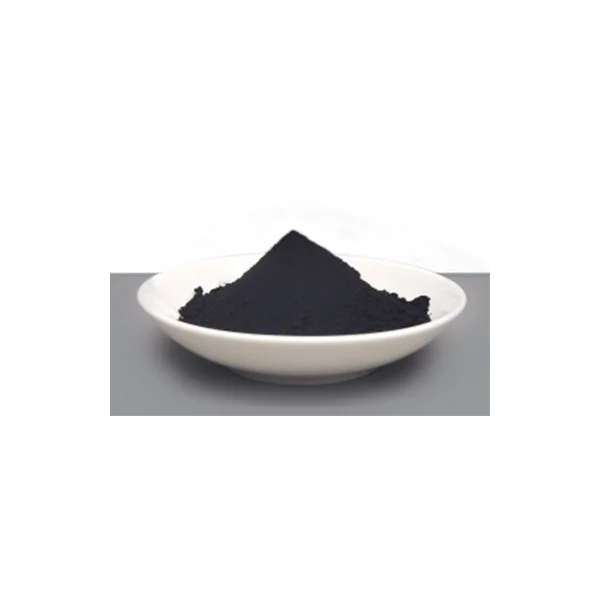Architectural design is an intricate blend of art, science, and technology, where every element contributes to creating a harmonious and visually appealing space. Among the myriad materials and techniques employed, pigments play a crucial role in defining the aesthetic character of buildings. D-Ray Technology cobalt black pigment, in particular, stands out for its unique properties and versatility, making it an invaluable addition to the architect's palette.

The Allure of Cobalt Black Pigment
Cobalt black pigment is renowned for its intense, deep black color that exhibits exceptional lightfastness and chemical stability. Unlike many other black pigments, cobalt black maintains its vibrant hue even under exposure to UV radiation, making it ideal for outdoor applications. Its high tinting strength allows for the creation of rich, saturated colors with minimal pigment usage, thus optimizing material costs and environmental impact.
Building Materials: The Canvas for Cobalt Black
Cement and Concrete: The Foundations of Elegance
In the realm of building materials, cement and concrete are the bedrock upon which many structures are built. The incorporation of cobalt black pigment into these materials transforms their mundane gray appearance into a sophisticated, monolithic black. This transformation not only enhances the visual appeal of the structure but also adds a layer of depth and mystery to the architectural space.
Cobalt black-pigmented cement and concrete can be used to create striking architectural features such as walls, floors, and columns. The pigment's chemical stability ensures that the color remains consistent over time, withstanding the rigors of weather and exposure. This makes it an excellent choice for both interior and exterior applications, where durability and aesthetics are paramount.
Colored Sand: The Artistic Touch
Colored sand, another versatile building material, finds its unique expression when infused with cobalt black pigment. This material can be used to create intricate patterns and textures on surfaces, adding a tactile and visual dimension to architectural designs. Cobalt black-pigmented sand can be applied to terrazzo floors, decorative walls, and mosaic artworks, among other things.
The deep black hue of cobalt black pigmented sand provides a striking contrast to lighter-colored materials, enhancing the overall visual impact of the design. Its fine particle size ensures even distribution and a smooth finish, making it ideal for detailed work.
The Aesthetic Impact of Cobalt Black Pigment
The application of cobalt black pigment in architectural design goes beyond mere coloration; it is a strategic tool for enhancing spatial aesthetics. The pigment's ability to create a strong visual contrast allows architects to manipulate light and shadow, creating dramatic effects that draw the viewer's eye and guide their movement through the space.
Creating Drama and Depth
In interior design, cobalt black-pigmented surfaces can be used to create focal points that anchor the space. For instance, a black wall or floor can serve as a backdrop for artwork or furniture, drawing attention to these elements and enhancing their significance within the room. The pigment's deep black hue also has the capacity to absorb light, creating a sense of intimacy and enclosure in larger spaces.
Unifying Diverse Elements
In exterior design, cobalt black pigment can be used to unify diverse architectural elements, creating a cohesive and harmonious overall composition. For example, black-pigmented concrete walls, columns, and paving can blend seamlessly with black-framed windows and doors, creating a strong visual connection between the building's components. This unity not only enhances the building's aesthetic appeal but also reinforces its architectural identity.
Environmental Considerations
Despite its intense color and high performance, cobalt black pigment is relatively eco-friendly compared to some other pigments. Its high tinting strength means that less pigment is required to achieve the desired color, reducing material waste and environmental impact. Additionally, the pigment's chemical stability ensures that it does not degrade or leach into the environment over time.
In conclusion, cobalt black pigment is a powerful tool for enhancing the spatial aesthetics of architectural designs. Its unique properties make it an ideal choice for building materials such as cement, concrete, and colored sand, transforming these mundane materials into works of art. By manipulating light and shadow, creating dramatic focal points, and unifying diverse elements, cobalt black pigment allows architects to achieve a level of visual sophistication that is both captivating and enduring. As we continue to explore the boundaries of architectural design, the role of D-Ray Technology cobalt black pigment as a key aesthetic enhancer will undoubtedly become even more significant.
https://www.draycolor.com/the-application-of-cobalt-black-pigment-in-architectural-design.html
